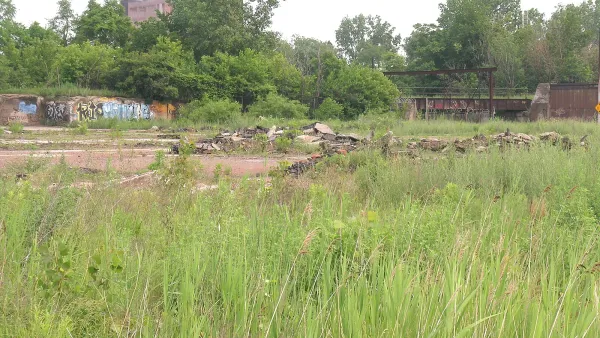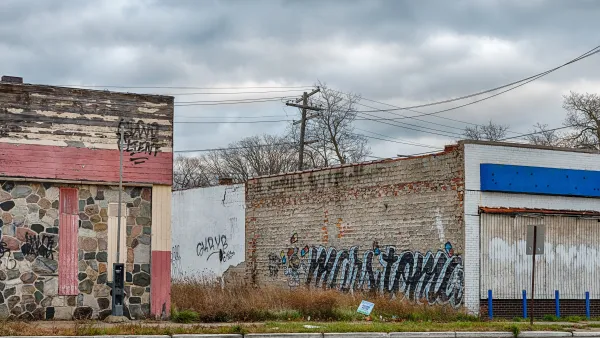John Gallagher investigates a growing trend of unsanctioned urban agriculture in Detroit, where residents have had to take alternative land use into their own hands.
Nearly thirty percent of Detroit's usable land area lies vacant today – not merely plots with abandoned buildings, but "empty fields from which all structures have been removed," Gallagher writes. And among the many alternative uses that residents have thought up for all that space, the most notable trend in recent years has been a surge in urban agriculture, with one farm growing as large as four acres.
"The gardens operate as small, nonprofit, volunteer-based plots on which residents grow fruits and vegetables," Gallagher reports. "In most cases, the food is donated to food banks, given away to neighborhoods or consumed by the growers themselves."
Without an official zoning classification, however, urban farmers in the Motor City have had to operate without legal sanction. There have been formal proposals to make use of the land, from large-scale agriculture to solar fields, "but city government – underfunded, understaffed and risk-averse – has hesitated to approve any of [them]."
In addition to gardens, Detroiters have been fencing in the empty lots around their own homes to create large, "suburban-size parcels" for playgrounds, parking lots, tool sheds, and the like. The practice of claiming these "blots" (a portmanteau of "block" and "lot") has slowly transformed the landscape of the city into one reminiscent of a subdivision. Margaret Dewar, professor of urban planning at the University of Michigan, claims that only 40% of "blots" in the city are on record with the city assessor's office. In Gallagher's words, "That's an indication that many owners are just taking the lot rather than buying it from the city or some other owner."
While Mayor Dave Bing is reaching out to residents to offer guidelines on how to use vacant land, community gardener Kofi Royal remains skeptical of the City's involvement. "Like I always tell people around here, we've got to do this because the cavalry might not be coming."
FULL STORY: With their city shrinking, many Detroiters use empty lots to grow gardens

National Parks Layoffs Will Cause Communities to Lose Billions
Thousands of essential park workers were laid off this week, just before the busy spring break season.

Retro-silient?: America’s First “Eco-burb,” The Woodlands Turns 50
A master-planned community north of Houston offers lessons on green infrastructure and resilient design, but falls short of its founder’s lofty affordability and walkability goals.

Delivering for America Plan Will Downgrade Mail Service in at Least 49.5 Percent of Zip Codes
Republican and Democrat lawmakers criticize the plan for its disproportionate negative impact on rural communities.

Test News Post 1
This is a summary

Test News Headline 46
Test for the image on the front page.

Balancing Bombs and Butterflies: How the National Guard Protects a Rare Species
The National Guard at Fort Indiantown Gap uses GIS technology and land management strategies to balance military training with conservation efforts, ensuring the survival of the rare eastern regal fritillary butterfly.
Urban Design for Planners 1: Software Tools
This six-course series explores essential urban design concepts using open source software and equips planners with the tools they need to participate fully in the urban design process.
Planning for Universal Design
Learn the tools for implementing Universal Design in planning regulations.
EMC Planning Group, Inc.
Planetizen
Planetizen
Mpact (formerly Rail~Volution)
Great Falls Development Authority, Inc.
HUDs Office of Policy Development and Research
NYU Wagner Graduate School of Public Service





























